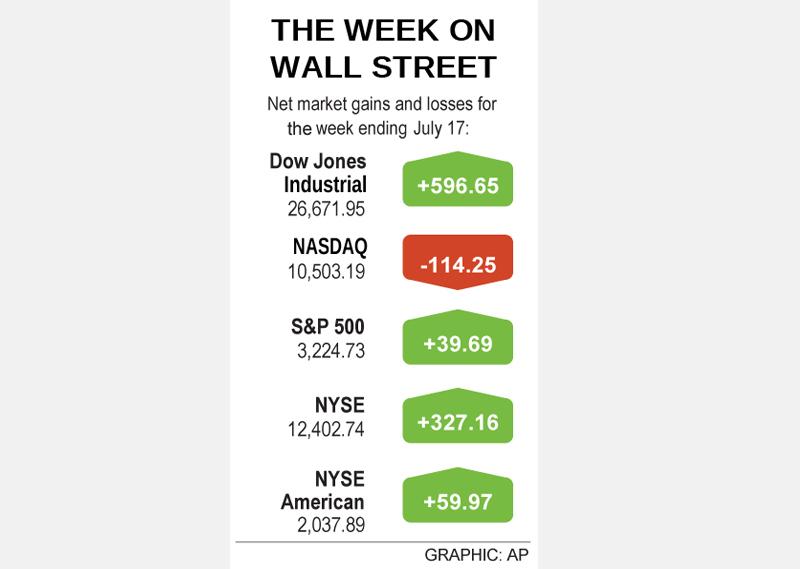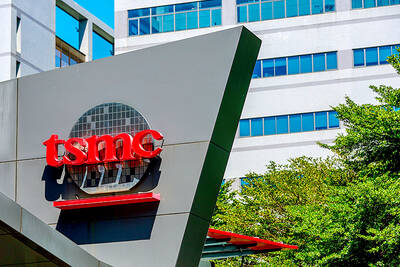The S&P 500 ended higher on Friday as investors weighed the prospect of more fiscal stimulus against fears of further business disruptions due to a record rise in COVID-19 cases in the US.
Netflix Inc tumbled 6.5 percent after the video streaming service forecast slower-than-expected subscriber growth during the third quarter, pulling the communication services sector down 0.4 percent.
The S&P 500 utilities, real-estate and healthcare indices were the session’s strongest gainers.

However, a 1.5 percent drop in Goldman Sachs Group Inc helped keep the Dow Jones Industrial Average in negative territory.
For the week, the S&P 500 and the Dow rose 1.25 percent and 2.29 percent respectively, after optimism over an eventual novel coronavirus vaccine and hopes of a post-pandemic economic recovery helped investors look past a continuous surge in COVID-19 cases.
Cases on Friday rose by at least 70,674, after climbing by a record 77,499 on Thursday.
The NASDAQ ended 1.08 percent lower for the week as investors sold shares of high-flying companies including Microsoft Corp and Amazon.com Inc and moved into cyclical sectors.
Next week, the second-quarter earnings season shifts into high gear with reports expected from corporate heavyweights including Microsoft, Tesla Inc, Intel Corp and Verizon Communications Inc.
With this year largely written off as a disaster for US corporations because of the virus, investors are looking for information from companies about the potential size and timing of an eventual recovery.
“The question is what 2021 and 2022 look like, and what can folks glean from the commentary, especially when companies have withdrawn their guidance and made it difficult to get a sense of what their prospects look like,” said Tom Hainlin, a national investment strategist at US Bank Wealth Management.
The Cboe Volatility Index, known as Wall Street’s “fear gauge,” ended at 25.68, its lowest closing level since June 5.
The Dow Jones Industrial Average fell 0.23 percent to end at 26,671.95 points, while the S&P 500 gained 0.28 percent to 3,224.73. The NASDAQ Composite climbed 0.28 percent to 10,503.19.
Unprecedented stimulus measures and improving economic data have helped the S&P 500 rise to within about 5 percent of its February record high.
Investors are also hoping for more fiscal support, as a program that offers additional unemployment benefits is set to expire on July 31. The US Congress is to return to Washington on Monday to debate another coronavirus aid bill.
“Both Republicans and Democrats have a strong incentive to agree upon further pre-election stimulus. It’s not a matter of ‘if’ a stimulus passes, it’s just what the size and content of that package looks like,” UBS Private Wealth Management senior vice president Andrea Bevis said.
BlackRock Inc, the world’s largest asset manager, rose 3.7 percent after reporting a jump in quarterly profit as investors poured money into its fixed-income funds and cash management services.
Volume on US exchanges was 9.5 billion shares, compared with the 11.6 billion average for the full session over the past 20 trading days.
Advancing issues outnumbered declining ones on the NYSE by a 1.43-to-1 ratio; on the NASDAQ, a 1.50-to-1 ratio favored advancers.
The S&P 500 posted 39 new 52-week highs and no new lows; the NASDAQ Composite recorded 89 new highs and 11 new lows.

Taiwan Semiconductor Manufacturing Co (TSMC, 台積電) has secured three construction permits for its plan to build a state-of-the-art A14 wafer fab in Taichung, and is likely to start construction soon, the Central Taiwan Science Park Bureau said yesterday. Speaking with CNA, Wang Chun-chieh (王俊傑), deputy director general of the science park bureau, said the world’s largest contract chipmaker has received three construction permits — one to build a fab to roll out sophisticated chips, another to build a central utility plant to provide water and electricity for the facility and the other to build three office buildings. With the three permits, TSMC

RUN IT BACK: A succesful first project working with hyperscalers to design chips encouraged MediaTek to start a second project, aiming to hit stride in 2028 MediaTek Inc (聯發科), the world’s biggest smartphone chip supplier, yesterday said it is engaging a second hyperscaler to help design artificial intelligence (AI) accelerators used in data centers following a similar project expected to generate revenue streams soon. The first AI accelerator project is to bring in US$1 billion revenue next year and several billion US dollars more in 2027, MediaTek chief executive officer Rick Tsai (蔡力行) told a virtual investor conference yesterday. The second AI accelerator project is expected to contribute to revenue beginning in 2028, Tsai said. MediaTek yesterday raised its revenue forecast for the global AI accelerator used

The DBS Foundation yesterday announced the launch of two flagship programs, “Silver Motion” and “Happier Caregiver, Healthier Seniors,” in partnership with CCILU Ltd, Hondao Senior Citizens’ Welfare Foundation and the Garden of Hope Foundation to help Taiwan face the challenges of a rapidly aging population. The foundation said it would invest S$4.91 million (US$3.8 million) over three years to foster inclusion and resilience in an aging society. “Aging may bring challenges, but it also brings opportunities. With many Asian markets rapidly becoming super-aged, the DBS Foundation is working with a regional ecosystem of like-minded partners across the private, public and people sectors

BREAKTHROUGH TECH: Powertech expects its fan-out PLP system to become mainstream, saying it can offer three-times greater production throughput Chip packaging service provider Powertech Technology Inc (力成科技) plans to more than double its capital expenditures next year to more than NT$40 billion (US$1.31 billion) as demand for its new panel-level packaging (PLP) technology, primarily used in chips for artificial intelligence (AI) applications, has greatly exceeded what it can supply. A significant portion of the budget, about US$1 billion, would be earmarked for fan-out PLP technology, Powertech told investors yesterday. Its heavy investment in fan-out PLP technology over the past 10 years is expected to bear fruit in 2027 after the technology enters volume production, it said, adding that the tech would